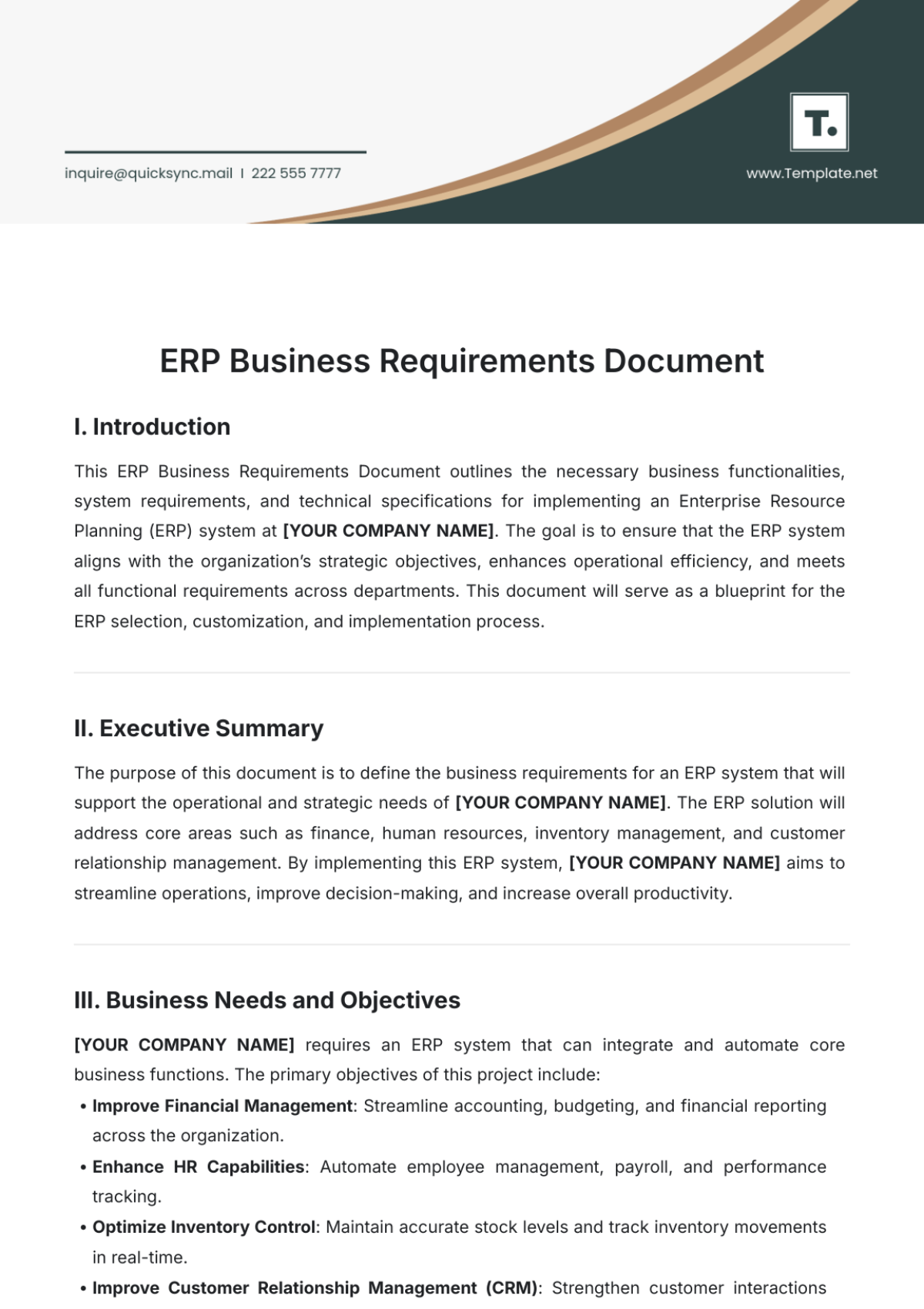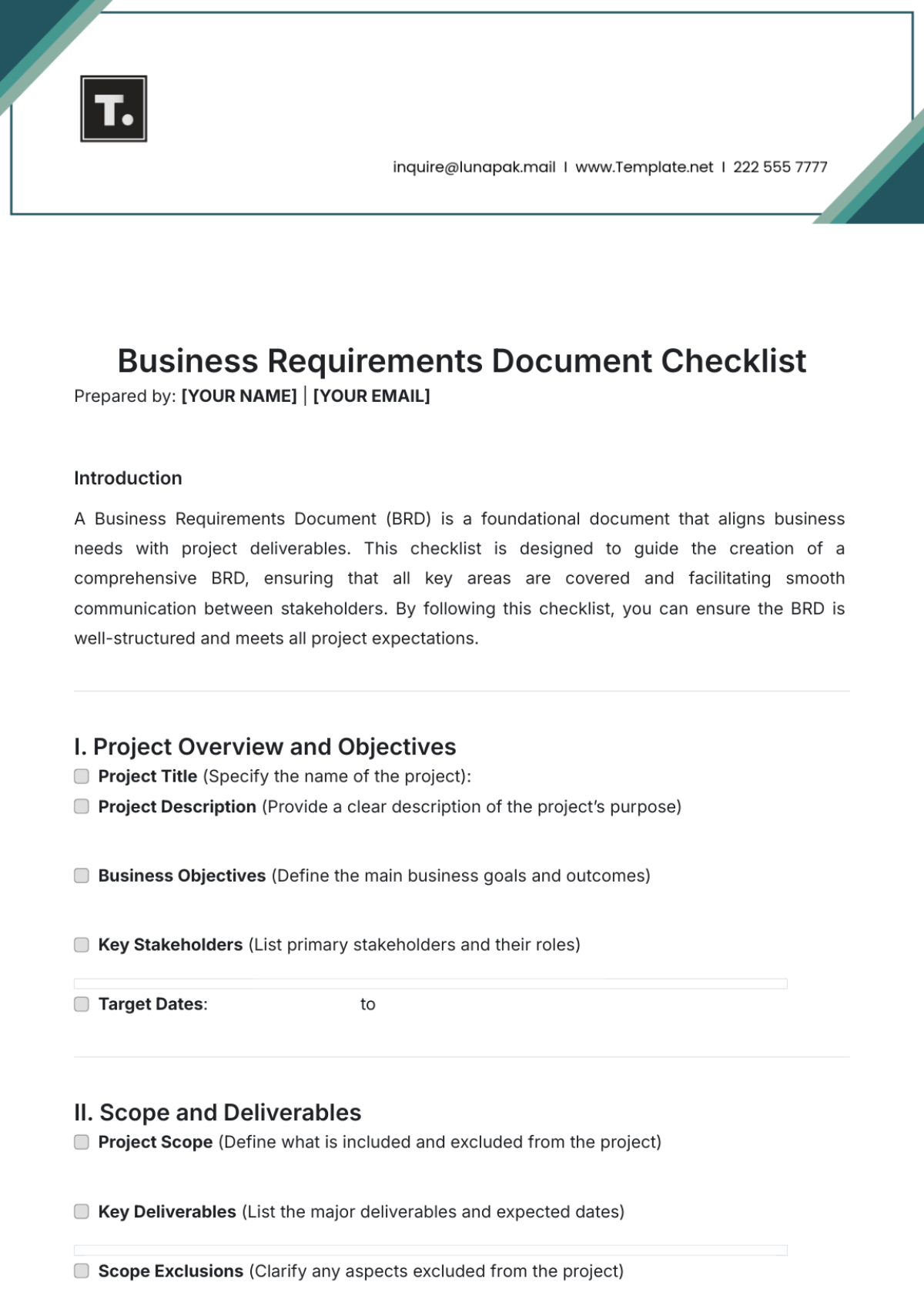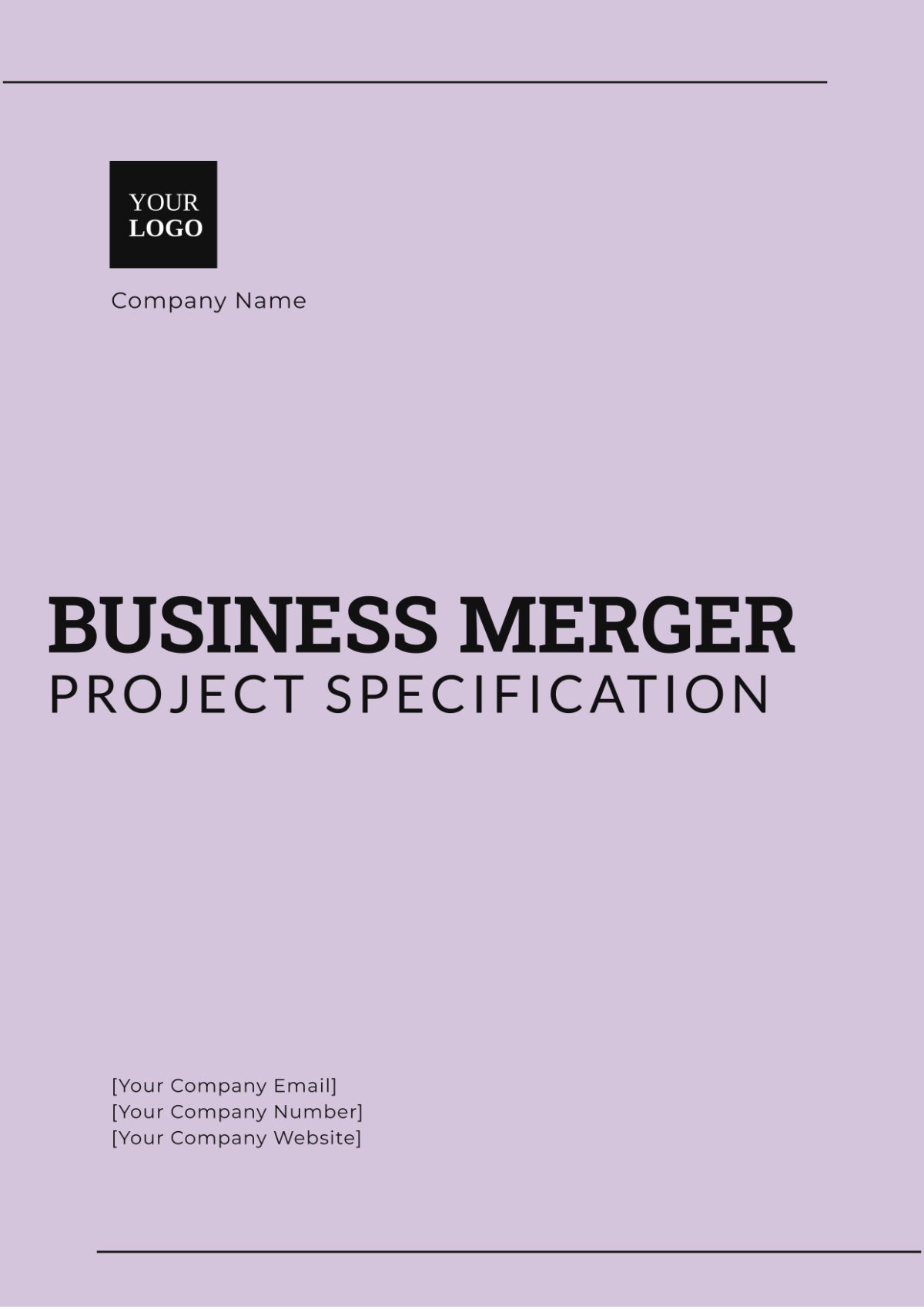CRM Business Requirements Document
Prepared by: [YOUR NAME]
[YOUR EMAIL]
[YOUR COMPANY NAME]
[YOUR COMPANY ADDRESS]
I. Introduction
This document outlines the business requirements for implementing and optimizing a Customer Relationship Management (CRM) system at [YOUR COMPANY NAME]. The purpose of this CRM Business Requirements Document (BRD) is to define the key features, functionalities, and business goals that the CRM system should address to improve customer engagement, streamline internal processes, and enhance overall business performance.
II. Business Objectives
The CRM system must help achieve the following business objectives:
Improve Customer Engagement: By creating personalized communication channels and leveraging customer data for targeted marketing, the system should increase customer satisfaction and retention.
Streamline Sales Processes: Automate lead management, sales pipeline tracking, and reporting to increase the efficiency and effectiveness of the sales team.
Enhance Customer Support: Provide a centralized platform for managing customer inquiries, support tickets, and service requests to improve response times and resolution efficiency.
Improve Decision-Making: Enable real-time reporting and analytics to provide insights into sales performance, customer behavior, and market trends.
III. Functional Requirements
The following features and functionalities are necessary for the CRM system to meet business goals:
Contact Management: The CRM must provide a robust database for managing customer profiles, including contact details, communication history, and purchase behavior.
Lead Management: Ability to capture, assign, and track leads throughout the sales pipeline, with automatic lead scoring and prioritization.
Sales Automation: Automation of repetitive tasks such as sending follow-up emails, scheduling meetings, and tracking sales progress.
Marketing Automation: Tools for creating and managing email campaigns, lead nurturing, and segmentation based on customer data.
Customer Service & Support: A helpdesk feature for managing support tickets, tracking issues, and providing customer self-service options.
Analytics and Reporting: Dashboards for real-time performance tracking, sales forecasting, and detailed customer insights.
IV. Non-Functional Requirements
System Scalability: The CRM must be able to handle an increasing volume of customers and transactions without performance degradation.
Data Security: The CRM must comply with GDPR and other relevant regulations, ensuring customer data is stored and handled securely.
Integration Capability: The CRM must integrate seamlessly with existing tools such as ERP systems, email marketing platforms, and customer support software.
User Experience: The interface should be intuitive and easy to use, with minimal training required for end-users.
Mobile Access: The CRM must be accessible from mobile devices to support remote sales and customer service teams.
V. Stakeholder Needs
The CRM must cater to the following stakeholder groups:
Stakeholder Group | Needs and Expectations |
|---|---|
Sales Team | Tools for tracking leads, sales pipeline, and customer interactions; access to performance analytics. |
Marketing Team | Segmentation and campaign management tools; analytics to assess marketing effectiveness. |
Customer Support | A helpdesk system for tracking support tickets and ensuring fast resolutions. |
Executive Team | High-level dashboards to monitor business performance, sales trends, and customer behavior. |
VI. System Constraints
Budget Limitations: The CRM system’s cost should not exceed $250,000 for the first two years of deployment, including licensing, customization, and training costs.
Timeframe: The CRM system should be fully deployed by June 30, 2051 to align with the company’s fiscal year goals.
Technology: The CRM must be compatible with the current IT infrastructure, which includes Windows Server 2023 and Microsoft SQL Server 2023.
User Capacity: The system should be able to support up to 500 concurrent users at peak usage times.
VII. CRM Selection and Vendor Evaluation
To ensure the CRM meets business needs, a structured evaluation process will be followed, as outlined below:
Date | Task | Responsible Person | Status |
|---|---|---|---|
January 15, 2051 | Finalize CRM requirements | [YOUR NAME] | Completed |
February 10, 2051 | Issue RFP and start vendor search | Tracey Gleason | In Progress |
March 20, 2051 | Vendor demos and assessments | Kitty Johns | Pending |
April 5, 2051 | Evaluate vendor proposals | Adelia Harber | Pending |
May 1, 2051 | Final decision on CRM vendor | Allene Tillman | Pending |
VIII. Conclusion
The successful implementation of a CRM system will significantly enhance the customer experience, optimize sales and marketing processes, and provide valuable insights for decision-making. The CRM system must align with [YOUR COMPANY NAME]'s objectives and support the evolving needs of the business. By adhering to this Business Requirements Document, the organization will ensure that the CRM system delivers measurable value across all departments, driving long-term success.






































